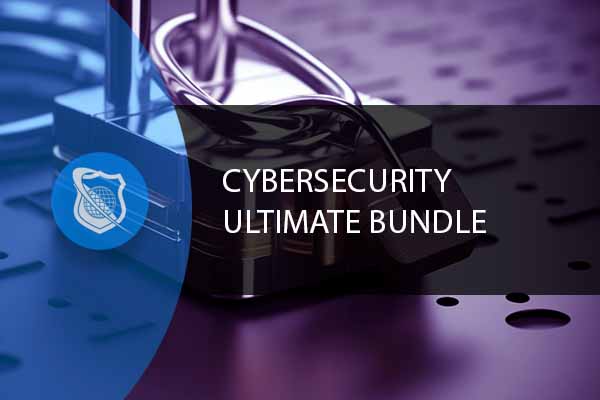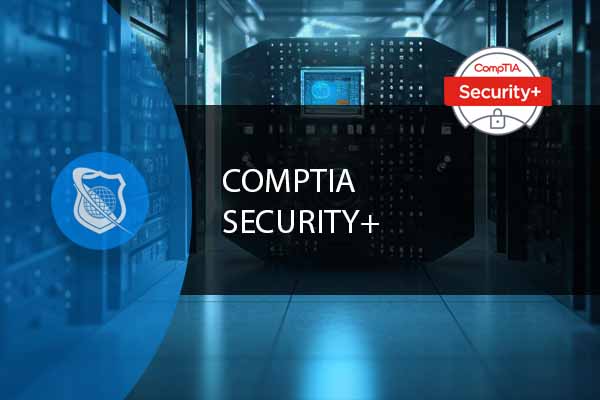The CompTIA Sec+ certification is a globally recognized credential that validates an individual’s knowledge and skills in the field of cybersecurity. The primary CompTIA Security+ objectives of the CompTIA Security+ certification include:
Security Fundamentals
The certification covers fundamental security objectives and principles of information security, ensuring that candidates have a strong foundation in the basics of cybersecurity. This includes CompTIA Security+ exam objectives like understanding malware, social engineering, and other common attack methods. The CompTIA Security+ syllabus is designed to cover these foundational topics thoroughly.
Threats, Attacks, and Vulnerabilities
Candidates learn about various types of threats, attacks, and vulnerabilities that can compromise the security+ objectives of computer systems, networks, and data. This includes understanding malware, social engineering, and other common attack methods. The security+ exam objectives are designed to make sure candidates are well-versed in identifying and mitigating these threats.
Technologies and Tools
The certification explores different security technologies, tools, and best practices used to secure networks, systems, and data. This includes topics like encryption, firewalls, intrusion detection systems (IDS), and more. The CompTIA Security+ SY0-601 objectives are aligned with the latest technologies and tools in the cybersecurity landscape.
Architecture and Design
Candidates learn about secure network and system design principles. This involves understanding how to create secure network architectures and implement security controls within various systems. The CompTIA Sec+ exam objectives ensure that candidates are proficient in secure architecture and design.
Identity and Access Management
The certification covers concepts related to user authentication, authorization, and access control. Candidates learn about the importance of strong authentication methods and controlling user access to resources. The security plus objectives are designed to cover this domain comprehensively.
Risk Management
The certification teaches candidates how to identify and manage security risks. This involves assessing vulnerabilities, evaluating potential impacts, and implementing risk mitigation strategies. The CompTIA Security+ objectives 2023 will continue to focus on risk management as a critical domain.
Cryptography
Candidates learn about the principles and techniques of cryptography, which is essential for securing data and communications. This includes understanding encryption algorithms, digital signatures, and cryptographic protocols. The Sec+ objectives are designed to cover cryptography in depth.
Security Assessments
The certification covers methods for conducting security assessments, including vulnerability scanning and penetration testing. Candidates learn how to identify weaknesses and assess the overall security posture of systems. The security plus exam objectives are aligned with industry best practices for security assessments.
Incident Response and Recovery
Candidates learn about strategies for responding to security incidents and recovering from them. This includes understanding incident handling procedures, communication strategies, and disaster recovery planning. The CompTIA Security+ topics include a detailed section on incident response and recovery.
Compliance and Ethics
The certification emphasizes the importance of adhering to security regulations, standards, and ethical guidelines. Candidates learn about legal and regulatory requirements related to cybersecurity, which is a part of the CompTIA Security+ course outline.
The CompTIA Security+ certification aims to provide a well-rounded understanding of cybersecurity concepts, skills, and best practices. It’s suitable for individuals looking to start a career in cybersecurity, as well as those seeking to validate their existing knowledge and skills in the field. The CompTIA Security+ exam objectives 601 and the CompTIA Security+ SY0-601 syllabus PDF are valuable resources for exam preparation.
Secure Your Networks and Prevent Password Breaches
Our robust CompTIA Sec+ course is the perfect resouce to ensure your company’s most valuable assets are safe. Up your security skills with this comprehensive course at an exceptional price.
Security Fundamentals
This objective focuses on establishing a solid understanding of the foundational concepts and principles that underpin information security. It’s crucial for candidates to grasp these fundamentals before diving into more advanced topics within the realm of cybersecurity. Here are the key areas covered under this objective:
- Confidentiality, Integrity, and Availability (CIA)
Candidates learn about the CIA triad, which aligns with the CompTIA Security+ objectives, particularly those related to data protection. - Security Governance and Policies
This topic is part of the CompTIA Security+ syllabus and focuses on the establishment of security objectives within an organization. - Risk Management
Candidates learn the basics of risk management, a critical domain in the CompTIA Security+ objectives 2023. - Compliance and Legal Considerations
This topic is a key part of the CompTIA Security+ topics and the CompTIA Security+ course outline, covering legal and regulatory requirements. - Security Awareness and Training
This section aligns with the security+ objectives of fostering a security-aware culture within organizations. - Physical Security
Candidates learn about physical security measures, a topic covered in the CompTIA Security+ SY0-601 objectives. - Social Engineering
This area is part of the security plus exam objectives, focusing on tactics used by attackers to manipulate individuals. - Wireless Security
This topic is included in the CompTIA Security+ exam objectives 601 and is essential for modern network security. - Authentication and Access Control
Candidates learn about user authentication methods, a key area in the CompTIA Security+ SY0-601 syllabus PDF. - Account Management
This topic is aligned with the security plus 601 objectives, focusing on effective user account management. - Principles of Least Privilege and Need to Know
Candidates learn about minimizing access rights, a concept covered in the CompTIA Security+ description. - Security Through the Systems Development Life Cycle (SDLC)
This topic is part of the CompTIA Security+ objectives and focuses on secure software development.
The Security Fundamentals objective provides candidates with a solid foundation in information security concepts. By mastering these fundamental principles, candidates are better equipped to comprehend the more advanced security topics covered in other sections of the CompTIA Security+ certification.
Threats, Attacks, and Vulnerabilities
This objective focuses on understanding the various threats that can compromise the security of computer systems, networks, and data. It covers different attack methods used by malicious actors to exploit vulnerabilities and compromise systems. Here are the key areas covered under this objective:
- Malware Types and Characteristics
Candidates learn about different types of malware, aligning with the CompTIA Security+ topics. They understand how malware spreads, its impact on systems, and techniques to mitigate its effects, which are part of the CompTIA Security+ exam objectives. - Social Engineering Attacks
This topic covers social engineering techniques and is included in the CompTIA Security+ SY0-601 objectives. Candidates learn about phishing, pretexting, baiting, and tailgating, all of which are part of the security+ objectives. - Application-based Attacks
Candidates understand attacks that target software applications, a topic that is covered in the CompTIA Security+ syllabus. This includes SQL injection, cross-site scripting (XSS), cross-site request forgery (CSRF), and buffer overflows. - Network-based Attacks
This section is aligned with the CompTIA Security+ objectives 2023 and covers attacks that exploit vulnerabilities in network protocols and services. Candidates learn about denial-of-service (DoS) attacks, distributed denial-of-service (DDoS) attacks, man-in-the-middle (MitM) attacks, and ARP poisoning. - Wireless Attacks
Candidates gain insight into attacks targeting wireless networks, a topic included in the CompTIA Security+ exam objectives 601. This includes rogue access points, evil twins, and wireless jamming. - Physical Attacks
The objective covers attacks that involve physical access to systems or data, aligning with the security plus 601 objectives. Candidates learn about the importance of physical security measures, such as theft, destruction, and tampering. - Vulnerabilities and Common Threats
This section explores common vulnerabilities and is part of the CompTIA Security+ course outline. Candidates understand the importance of vulnerability assessments and patch management to address these weaknesses. - Exploits and Their Impact
Candidates learn about the potential consequences of successful exploitation, a topic that is part of the CompTIA Security+ description. This includes unauthorized access, data breaches, system compromise, and information theft. - Attack Frameworks and Techniques
This area is included in the CompTIA Security+ SY0-601 syllabus PDF and covers frameworks used by attackers to categorize and organize attack methods, such as the MITRE ATT&CK framework. Candidates learn how to analyze and respond to attacks systematically. - Cryptographic Attacks
Candidates understand attacks targeting encryption mechanisms and cryptographic protocols, aligning with the sec+ objectives. This includes attacks like brute force, dictionary attacks, and collision attacks. - Identity and Access Management Attacks
The objective covers attacks on authentication and access control systems, a topic that is part of the CompTIA Security+ topics. This includes password attacks, credential stuffing, and privilege escalation. - Cyber Threat Intelligence
Candidates learn about the importance of threat intelligence, which is covered in the CompTIA Security+ objectives. This involves gathering information about threat actors, tactics, techniques, and procedures (TTPs).
Understanding threats, attacks, and vulnerabilities is crucial for developing effective cybersecurity strategies. By mastering these concepts, candidates are better prepared to prevent, detect, and respond to various types of security incidents, thereby enhancing the overall security posture of systems and networks.
Technologies and Tools
This objective focuses on introducing candidates to various security technologies, tools, and best practices used to secure computer systems, networks, and data. Understanding these technologies is essential for implementing effective security measures. Here are the key areas covered under this objective:
- Firewalls and Intrusion Detection/Prevention Systems (IDS/IPS)
Candidates learn about firewalls and IDS/IPS technologies, aligning with the CompTIA Security+ objectives. They understand how these systems detect and prevent unauthorized access and malicious activities, which is part of the CompTIA Security+ exam objectives. - Network Security Appliances
This section covers security appliances and is included in the CompTIA Security+ SY0-601 objectives. It focuses on technologies like proxy servers, load balancers, and web application firewalls (WAFs). - Secure Email Gateways
Candidates learn about technologies that protect email communication, a topic covered in the CompTIA Security+ syllabus. This includes protection from spam, phishing, malware, and other email-borne threats. - Endpoint Security Solutions
This area is aligned with the CompTIA Security+ objectives 2023 and covers security measures designed to protect individual devices. This includes antivirus software, anti-malware solutions, and endpoint detection and response (EDR) tools. - Cryptography Tools
Candidates explore cryptographic technologies, a topic included in the CompTIA Security+ exam objectives 601. This includes encryption algorithms, digital signatures, and cryptographic key management. - Security Assessment Tools
This section is part of the CompTIA Security+ course outline and introduces candidates to tools used for vulnerability scanning, penetration testing, and ethical hacking. - Secure Protocols
Candidates understand the importance of using secure communication protocols, aligning with the security plus 601 objectives. This includes HTTPS, SSL/TLS, and SSH. - Identity and Access Management Tools
The objective covers tools used for user authentication, authorization, and access control, a topic that is part of the CompTIA Security+ description. This includes single sign-on (SSO) solutions and multi-factor authentication (MFA) tools. - Advanced Authentication Tools
Candidates learn about biometric authentication technologies, which are covered in the CompTIA Security+ SY0-601 syllabus PDF. This includes fingerprint recognition, iris scanning, and facial recognition. - Security for Mobile Devices
This section is included in the CompTIA Security+ topics and covers security measures for mobile devices. This includes mobile device management (MDM) solutions, remote wipe capabilities, and containerization. - Secure Virtualization and Cloud Technologies
Candidates understand how to secure virtualized environments and cloud services, aligning with the sec+ objectives. They learn about virtualization security controls and the shared responsibility model in cloud environments. - Intrusion Detection and Prevention Systems
Candidates explore technologies that monitor network traffic, a topic that is part of the CompTIA Security+ objectives. These technologies automatically block or alert on potential threats. - Wireless Security Settings
The objective covers securing wireless networks through technologies like Wi-Fi Protected Access (WPA), WPA3, and Extensible Authentication Protocol (EAP), which are included in the CompTIA Security+ exam objectives 601. - Security Information and Event Management (SIEM) Tools
Candidates learn about SIEM tools, which are covered in the CompTIA Security+ objectives. These tools are used to collect, analyze, and correlate security event data from various sources.
Understanding these technologies and tools is crucial for implementing effective security measures and safeguarding systems and networks against a wide range of threats. By gaining proficiency in these areas, candidates are better equipped to make informed decisions when selecting and configuring security solutions.

Lock In Our Lowest Price Ever For Only $14.99 Monthly Access
Your career in information technology last for years. Technology changes rapidly. An ITU Online IT Training subscription offers you flexible and affordable IT training. With our IT training at your fingertips, your career opportunities are never ending as you grow your skills.
Plus, start today and get 10 free days with no obligation.
Architecture and Design
This objective focuses on understanding the principles of secure network and system design. Candidates learn how to implement security controls and best practices in the design phase to ensure that systems and networks are resilient against various threats. Here are the key areas covered under this objective:
- Secure Network Design
Candidates learn how to design networks with security in mind, a topic that aligns with the CompTIA Security+ objectives. This includes segmenting networks, implementing firewalls, and designing demilitarized zones (DMZs). - Secure Systems Design
This section covers the principles of secure systems architecture, which is part of the CompTIA Security+ syllabus. Candidates understand how to select and configure hardware and software components with security considerations in mind. - Mobile Security Considerations
Candidates learn about securing mobile devices and applications, a topic covered in the CompTIA Security+ objectives 2023. This involves implementing encryption, containerization, and secure app development practices. - Cloud and Virtualization Security Design
This area is included in the CompTIA Security+ exam objectives 601 and covers designing secure cloud and virtualized environments. Candidates understand how to configure security controls within virtual machines and secure data in the cloud. - IoT Security
Candidates explore security considerations for Internet of Things (IoT) devices, aligning with the security plus 601 objectives. This includes securing communication between devices, implementing authentication, and managing device identities. - Embedded Systems Security
This section is part of the CompTIA Security+ course outline and covers securing embedded systems found in devices like industrial control systems and medical devices. - Physical Security Design
Candidates understand how to design physical security measures, a topic that is part of the CompTIA Security+ description. This includes access controls, surveillance systems, and secure facility layouts. - Secure Application Development and Deployment
This area is covered in the CompTIA Security+ SY0-601 syllabus PDF and focuses on secure software development practices. Candidates learn about secure coding, input validation, and secure deployment procedures. - Cloud Deployment Models
Candidates explore different cloud deployment models, which are included in the CompTIA Security+ topics. This includes public, private, hybrid, and community clouds, along with the security considerations for each model. - Authorization and Authentication Services
The objective covers designing authentication and authorization services, aligning with the sec+ objectives. This includes single sign-on (SSO), federation, and role-based access control (RBAC). - Identity and Access Management Controls
Candidates understand how to design and implement access controls, a topic that is part of the CompTIA Security+ objectives. This ensures that users have appropriate permissions and that the principle of least privilege is enforced. - Vulnerability Management Best Practices
This section is included in the CompTIA Security+ exam objectives 601 and covers designing vulnerability management processes. Candidates learn how to identify, prioritize, and remediate vulnerabilities in a systematic manner. - Security Assessments
Candidates learn about conducting security assessments, which are covered in the CompTIA Security+ objectives. This includes vulnerability scanning, penetration testing, and security audits. - Resiliency and Redundancy Planning
This area aligns with the CompTIA Security+ objectives 2023 and covers designing systems with resiliency and redundancy. Candidates learn how to ensure continuous availability in the face of hardware failures or attacks.
Understanding architecture and design principles is crucial for building secure systems and networks from the ground up. By incorporating security measures during the design phase, candidates are better equipped to create robust and resilient environments that effectively protect against a wide range of security threats.
Identity and Access Management
This objective focuses on managing user identities and controlling their access to resources within an organization’s systems and networks. Candidates learn about authentication methods, authorization mechanisms, and access controls. Key areas covered include:
- Authentication Factors
Candidates understand different authentication factors, a topic that aligns with the CompTIA Security+ objectives. This includes something you know (passwords), something you have (tokens), and something you are (biometrics). - Authentication Protocols
This section covers common authentication protocols like LDAP, RADIUS, and TACACS+, which are part of the CompTIA Security+ syllabus. Understanding these protocols is crucial for CompTIA Security+ exam objectives related to authentication. - Authorization and Access Controls
Candidates learn about authorization concepts, a topic covered in the CompTIA Security+ objectives 2023. This includes role-based access control (RBAC), mandatory access control (MAC), and discretionary access control (DAC). - Access Control Models
This area is included in the CompTIA Security+ exam objectives 601 and covers access control models like MAC, DAC, and RBAC. Candidates learn how these models are used to enforce access permissions, aligning with the security plus 601 objectives. - Federated Identity Management
Candidates understand how federated identity management allows users to access resources across multiple systems using a single set of credentials. This topic is part of the CompTIA Security+ course outline and is essential for modern identity management. - Single Sign-On (SSO)
This section covers the benefits and implementation of SSO, a topic that is part of the CompTIA Security+ description. Candidates learn how SSO allows users to authenticate once and access multiple resources, which is covered in the CompTIA Security+ SY0-601 syllabus PDF.
Risk Management
The risk management objective focuses on identifying, assessing, and mitigating security risks to protect an organization’s assets. Candidates learn about risk assessment methodologies, risk treatment strategies, and risk mitigation controls. Key areas covered include:
- Risk Assessment Methods
Candidates learn about quantitative and qualitative risk assessment methods, a topic that aligns with the CompTIA Security+ objectives. These methods are used to identify and evaluate potential security risks, which is essential for the CompTIA Security+ exam objectives. - Risk Response Techniques
This section covers risk response strategies such as risk avoidance, risk acceptance, risk mitigation, and risk transfer. Understanding these techniques is part of the CompTIA Security+ syllabus and is crucial for managing security risks effectively. - Incident Response
Candidates understand the importance of incident response plans, a topic covered in the CompTIA Security+ objectives 2023. These plans are designed to minimize the impact of security incidents and breaches, aligning with the security plus 601 objectives. - Disaster Recovery Planning
This area is included in the CompTIA Security+ exam objectives 601 and covers developing disaster recovery plans. Candidates learn how to ensure business continuity in the event of major disruptions, which is part of the CompTIA Security+ course outline.

Cybersecurity Training Series – 15 Courses
Embark on a Thriving Cybersecurity Career! With our Ultimate Cyber Security training courses, you’ll dive into the world of ethical hacking, penetration testing, and network security. Our 15 comprehensive courses, led by industry experts, will equip you with essential Cybersecurity skills, setting you on the path to success in this ever-evolving field.
Cryptography
The cryptography objective introduces candidates to the principles and techniques of cryptography, used to secure data and communications. Candidates learn about encryption algorithms, cryptographic protocols, and key management. Key areas covered include:
- Symmetric and Asymmetric Cryptography
Candidates understand the differences between symmetric and asymmetric encryption, a topic that aligns with the CompTIA Security+ objectives. Knowing when to use each type of encryption is crucial for the CompTIA Security+ exam objectives related to cryptography. - Public Key Infrastructure (PKI)
This section covers PKI components like digital certificates, certificate authorities (CAs), and certificate revocation lists (CRLs). Understanding these components is part of the CompTIA Security+ syllabus and is essential for secure communications. - Hashing Algorithms
Candidates learn about cryptographic hashing algorithms, a topic covered in the CompTIA Security+ objectives 2023. These algorithms are used for data integrity verification and are aligned with the security plus 601 objectives. - Digital Signatures
This area is included in the CompTIA Security+ exam objectives 601 and covers digital signatures. Candidates learn about the role of digital signatures in providing authenticity and non-repudiation of digital documents, which is part of the CompTIA Security+ course outline.
Security Assessments
This objective involves assessing the security posture of systems, networks, and applications to identify vulnerabilities and weaknesses. Candidates learn how to use various methods to evaluate and enhance the security of an organization’s infrastructure. Key areas covered include:
- Vulnerability Scanning
Candidates learn how to use vulnerability scanning tools, a topic that aligns with the CompTIA Security+ objectives. This process involves scanning networks and systems to detect missing patches and misconfigurations, which is essential for the CompTIA Security+ exam objectives related to vulnerability management. - Penetration Testing
This section covers conducting controlled ethical hacking activities, part of the CompTIA Security+ syllabus. Candidates learn how to identify vulnerabilities, exploit them, and provide recommendations for remediation, aligning with the security plus 601 objectives. - Security Assessment Methodologies
Candidates understand different assessment methodologies, a topic covered in the CompTIA Security+ objectives 2023. This includes black box testing, white box testing, and gray box testing, which are used to evaluate systems from different perspectives. - Risk Assessment
This area is included in the CompTIA Security+ exam objectives 601 and covers assessing the potential impact and likelihood of identified vulnerabilities. Candidates learn how to determine the associated risk level, which is part of the CompTIA Security+ course outline.
Incident Response and Recovery
This objective focuses on preparing for, responding to, and recovering from security incidents, breaches, and disruptions. Candidates learn about strategies and procedures to minimize the impact of incidents and restore normal operations. Key areas covered include:
- Incident Response Plans
Candidates understand the importance of having a well-defined incident response plan, a topic that aligns with the CompTIA Security+ objectives. This plan outlines roles, responsibilities, communication channels, and procedures to follow during incidents, which is essential for the CompTIA Security+ exam objectives related to incident management. - Incident Classification and Triage
This section covers how to classify incidents based on severity and impact, part of the CompTIA Security+ syllabus. Candidates learn how to prioritize incident response activities accordingly, aligning with the security plus 601 objectives. - Communication Strategies
Candidates learn about effective communication strategies during incidents, a topic covered in the CompTIA Security+ objectives 2023. This includes notifying stakeholders, coordinating with law enforcement if necessary, and managing public relations. - Containment and Eradication
This area is included in the CompTIA Security+ exam objectives 601 and covers containing the incident to prevent further damage. Candidates learn how to eradicate the root cause of the incident to ensure it doesn’t recur, which is part of the CompTIA Security+ course outline. - Recovery and Lessons Learned
Candidates understand the recovery process, including restoring affected systems and data. They also learn the importance of conducting post-incident reviews to identify areas for improvement, aligning with the CompTIA Security+ objectives.
Compliance and Ethics
This objective emphasizes the importance of adhering to legal and regulatory requirements, industry standards, and ethical guidelines within the field of cybersecurity. Candidates learn about the legal implications of security breaches and the ethical considerations in handling sensitive information. Key areas covered include:
- Legal and Regulatory Requirements
Candidates understand the legal obligations related to cybersecurity, a topic that aligns with the CompTIA Security+ objectives. This includes data protection laws, privacy regulations, and breach notification requirements, which are essential for the CompTIA Security+ exam objectives related to legal compliance. - Industry Standards
This section covers compliance with industry-specific standards, part of the CompTIA Security+ syllabus. Candidates learn about standards such as the Payment Card Industry Data Security Standard (PCI DSS) and Health Insurance Portability and Accountability Act (HIPAA), aligning with the security plus 601 objectives. - Ethical Considerations
Candidates learn about ethical responsibilities, a topic covered in the CompTIA Security+ objectives 2023. This includes handling sensitive information, conducting security assessments, and respecting privacy. - Code of Conduct
This area is included in the CompTIA Security+ exam objectives 601 and covers establishing and adhering to a code of conduct. Candidates learn about promoting ethical behavior and integrity within the organization, which is part of the CompTIA Security+ course outline. - Incident Reporting
Candidates understand the importance of reporting security incidents promptly and accurately, aligning with the CompTIA Security+ objectives. This involves reporting to relevant authorities as required by law.
By mastering these objectives, candidates are better prepared to handle security assessments, respond to incidents effectively, and ensure compliance with legal and ethical standards, contributing to a more secure and trustworthy cybersecurity environment.
Conclusion
The CompTIA Security+ certification covers a wide range of essential cybersecurity concepts and skills. The primary objectives discussed in this overview are designed to equip candidates with a comprehensive understanding of security fundamentals, threats, attacks, vulnerabilities, security technologies, architecture and design, identity and access management, risk management, and cryptography. By mastering these objectives, individuals can enhance their ability to secure systems, networks, and data, and contribute effectively to the field of cybersecurity.
CompTIA Security+ Certification Exam : Essential FAQs
What are the key CompTIA Security+ Certification Objectives?
The CompTIA Security+ certification is designed to validate the baseline skills necessary to perform core security functions and pursue an IT security career. The key objectives encompass a range of topics, including threats, attacks, and vulnerabilities; technologies and tools; architecture and design; identity and access management; risk management; and cryptography and PKI. These objectives ensure candidates have a broad understanding of cybersecurity principles and practices.
How often are the CompTIA Security+ objectives updated?
CompTIA regularly updates the Security+ exam objectives to keep pace with the rapidly evolving cybersecurity landscape. Typically, updates occur every three years to include the latest trends, technologies, and practices in cybersecurity. It’s essential for candidates to refer to the most current version of the CompTIA Security+ objectives to ensure they are studying relevant material.
What is the importance of understanding CompTIA Security+ objectives for exam preparation?
Understanding the CompTIA Security+ objectives is crucial for effective exam preparation as they outline the core knowledge areas and skills that will be tested. By familiarizing themselves with these objectives, candidates can tailor their study efforts to cover all necessary topics, identify areas requiring additional focus, and efficiently allocate their study time. This strategic approach helps in mastering the material and enhances the chances of passing the exam.
Are practical skills tested in the CompTIA Security+ exam, according to the objectives?
Yes, the CompTIA Security+ exam not only tests theoretical knowledge but also practical skills. The objectives include performance-based questions that require candidates to solve problems in a simulated environment. This aspect of the exam ensures that candidates can apply their knowledge to real-world scenarios, demonstrating their ability to identify and address security threats, configure security systems, and manage security policies.
How can candidates ensure they cover all CompTIA Security+ objectives in their study plan?
Candidates can ensure comprehensive coverage of the CompTIA Security+ objectives by using a variety of study resources, including official CompTIA study guides, training courses, practice exams, and online forums. Creating a structured study plan that allocates time to each objective, based on personal strengths and weaknesses, is also beneficial. Engaging in hands-on practice, such as setting up a lab environment to experiment with security tools and techniques, can further reinforce learning and prepare candidates for the practical elements of the exam.


























1 thought on “CompTIA Sec+ Objectives : A Deeper Dive”
great article, very helpful!
Comments are closed.